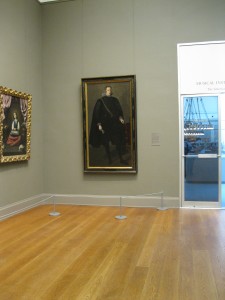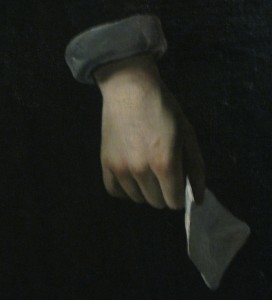On a Velázquez Portrait, and the Value of Expertise
This is an unusual entry into a discussion on the limits of patient empowerment.
In late December the Times ran a story, beginning on its front page, about a portrait in the Metropolitan Museum of Art by Diego Velázquez, the 17th Century Spanish painter. The news was that the tall representation of the teenage Prince Philip IV would be back on display in the European paintings galleries after a 16-month cleaning, restoration and re-evaluation of the work. And, in case you weren’t up on your art history news – the painting really is a Velázquez.

I learned this morning that the museum received the painting in 1913. It was a gift of Benjamin Altman (that would be B. Altman, as in the department store of my childhood…). The 7-foot portrait was considered a true masterpiece for hundreds of years, its authenticity supported by a receipt signed by Velázquez and dated Dec. 4, 1624. According to the Times now, in 1973 experts at the museum formally revised their opinion of the painting; they down-rated it, saying it’s a product of Velázquez’s studio, rather than of the artist himself.

Evidently Michael Gallagher, the chief paintings conservator at the Met, recently became concerned about the painting’s “workshop” label based on his experience upon cleaning another, later Velázquez portrait at the Frick. “Its true condition was obfuscated by the decades of varnish and the liberal repainting,” he said of the Met portrait. According to the Times, Philip’s left eye was missing, possibly from flaking or vandalism. Ultimately, x-ray analyses and careful examination of the cleaned portrait convinced Gallagher and his colleagues of the portrait’s legitimacy.
I was in the neighborhood, so I thought I’d check out the work for myself, in light of this new information. I spent a while staring at it, studying the prince’s hand and other features about which I’d recently updated my knowledge. Still, I realized, there was no way in the world I could tell, on my own and even if my life depended on it, if it were a Velázquez, or not a Velázquez.
Sometimes you have to rely on experts. I don’t have a Ph.D. in art history. Or anything approaching sufficient knowledge of Velázquez and his workshop, Prince Philip IV of Spain, x-ray analyses of oil paintings, varnish and resins, 17th Century receipts and signatures, or similar “cases” – like the related portrait that turns out to be in the Prado, and other works by the same painter – to know the difference.
That’s the thing – in medicine, if you have an unusual health condition, like a rare form of T cell lymphoma or an obscure infection, you may find that you depend on a doctor’s expertise. Recommending the right treatment (which might be no treatment) requires knowing and understanding the correct diagnosis. Figuring out what’s the correct diagnosis requires a lot of knowledge, and experience.

As for patient empowerment, I think what patients with rare or puzzling conditions can do is to make sure they’re comfortable with their physicians, that their doctors know what about what they’re treating and will admit when they’re unsure of a diagnosis or need more expert, specialist advice. The problem, then, is for doctors to admit what they don’t know, which in the end requires that they be well-educated and able to discern unusual cases and outliers, and take the time to notice – and not dismiss – details about their patients’ stories that warrant further examination and thought.
—–
Leave a Reply